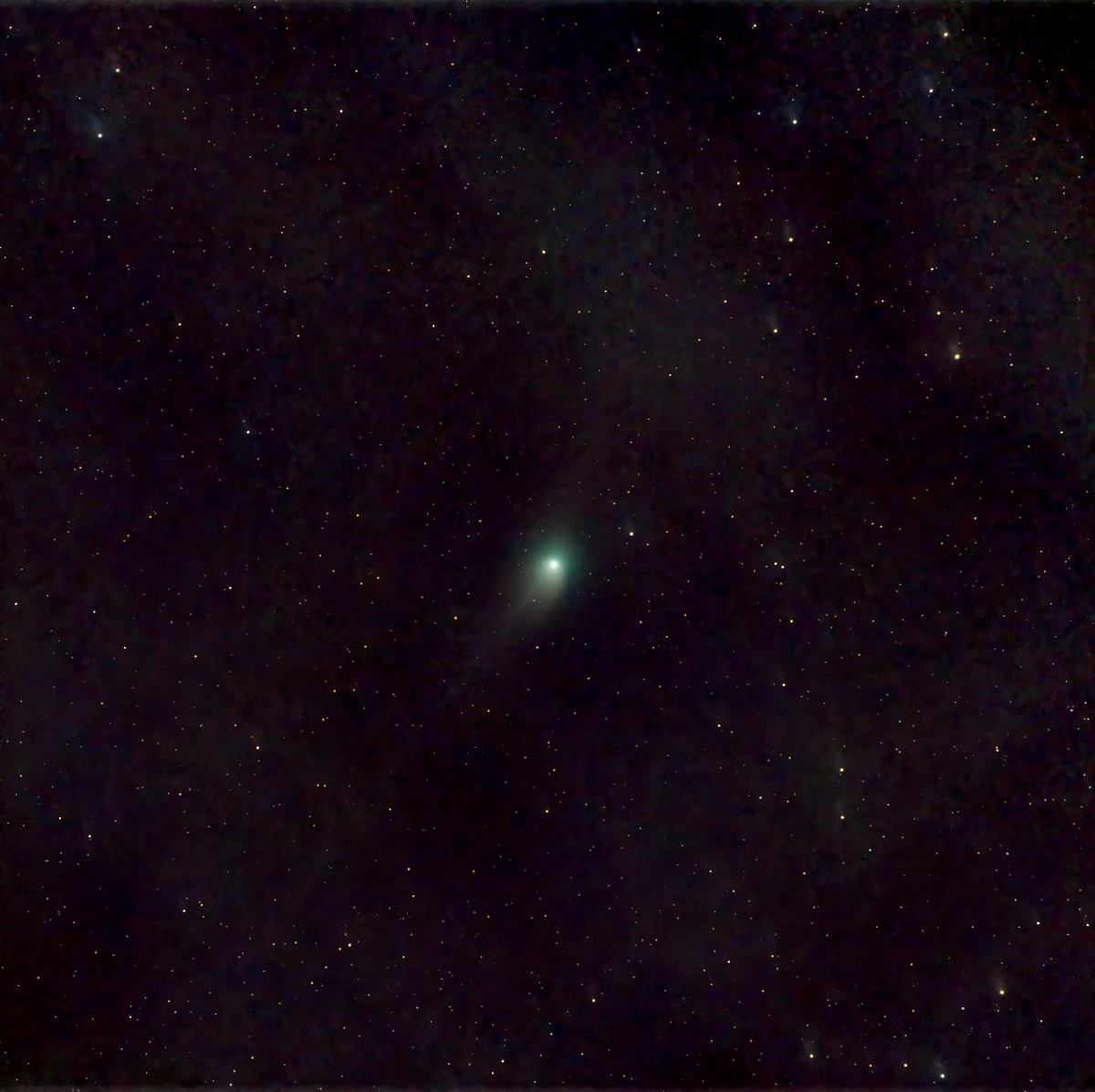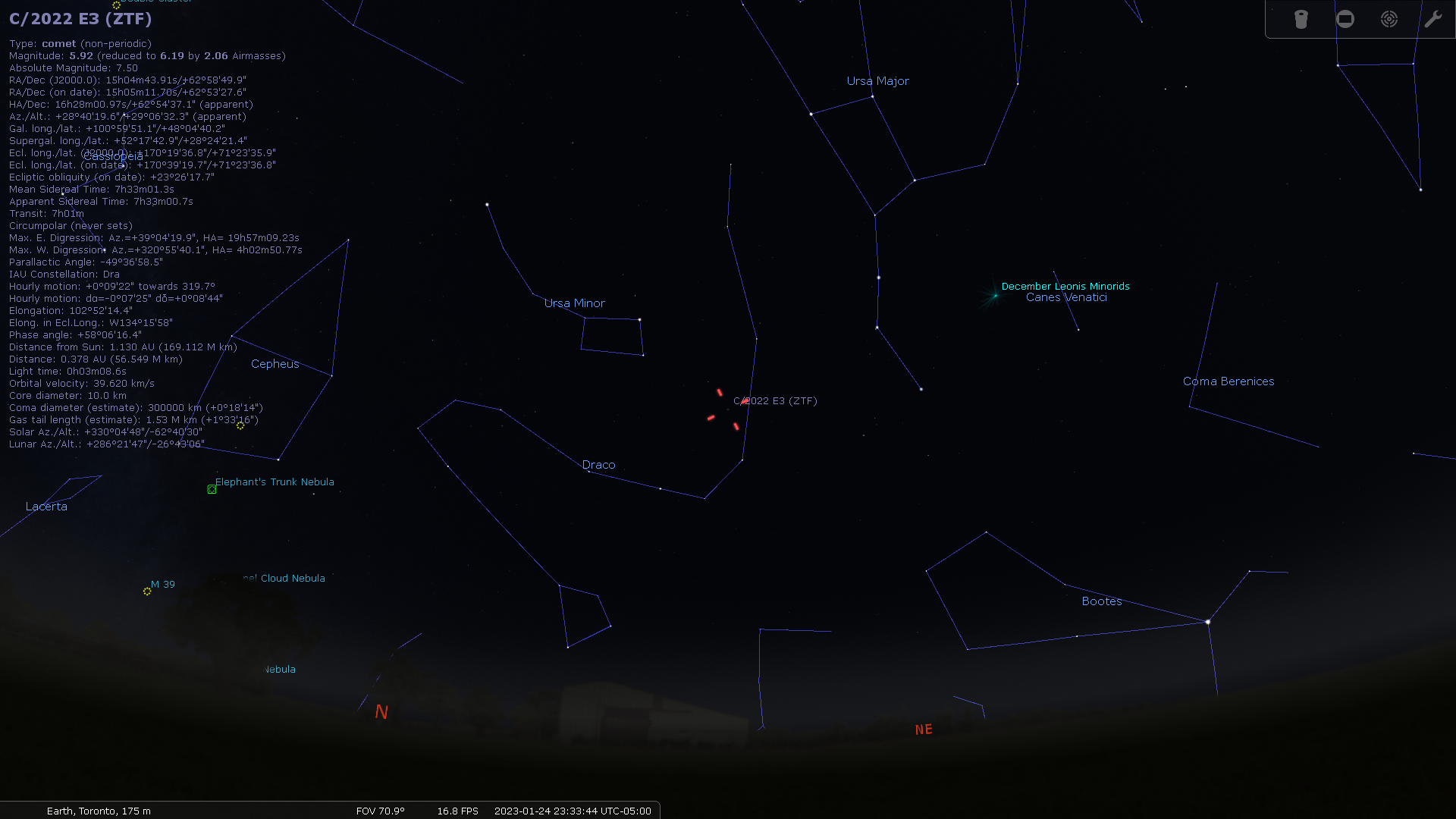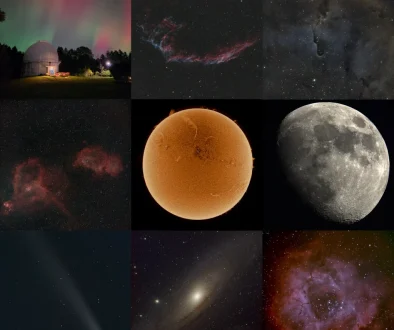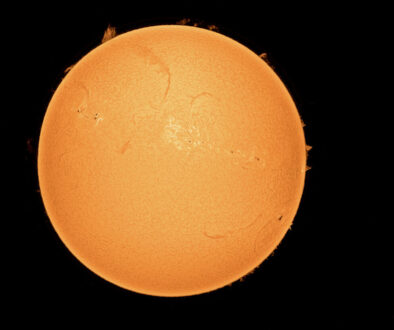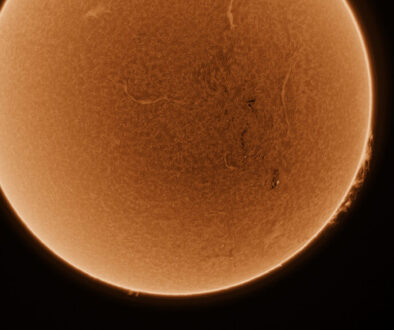Chasing Comet C/2022 E3 (ZTF): A Race Against Time and Weather
After more than a month of cloudy skies, I was excited to see that the weather forecast on January 24 was clear at 11pm for about one hour. I had the chance to image the comet C/2022 E3 (ZTF) and I decided to give it a try. I started to setup my gear, although I knew that the conditions were less than ideal: the comet’s altitude was only 28 degrees above the horizon, humidity was high (more than 80%) and to complete the picture there were high clouds and haze.
My challenge: I only had about 1 hour to setup my gear, perform a rough polar align (for this session I decided not to polar align to save precious imaging time), power the telescope on and launch my imaging sequence, before the clouds rolled in again. So, I had to be quick and efficient in order to capture the comet.
I decided to use this setup:
- the Rokinon 135mm lens because of its wide field of view, which is more forgiving in case of non perfect polar alignment;
- my dedicated ZWO ASI533MC Pro cooled camera;
- a light pollution filter (Optolong L-Pro);
- the Celestron AVX mount.
Another important step was to have the most updated coordinates for the comet. I downloaded the ephemerides in Stellarium in advance. I also published a short tutorial that explains how to add a comet in Stellarium.
Next, I launched NINA (my favorite automated DSO imaging software), I cooled the camera to the right temperature, focused the lens, and pointed the scope to the comet through Stellarium. The comet was there, bright, and perfectly centered in my frame: I was ready for astro-imaging! I shot a sequence of 15 x 2 minutes images (for a total integration time of 30 minutes), took flat frames before packing for the night. Finally, I processed the images with PixInsight (it was hard!) and GIMP.
I am happy to share my final image of the comet and a video that shows the comet moving through the sky in just 30 minutes.
The comet C/2022 E3 (ZTF) will reach its minimum distance from Earth on February 1, at a distance of about 42 million kilometers (26 million miles). Unfortunately, for Southern Ontario the weather forecast for the next few days is not promising. But, as an astrophotographer, I never give up hope!
Stay tuned and always remember to look up at the stars.
Date: 2023-01-25
Time: 4:33 a.m. to 05:11 a.m. UTC
Location: my driveway in Richmond Hill (ON)
Scope: Rokinon 135mm
Mount: Celestron AVX
Camera: ZWO ASI533MC PRO cooled at -10°C
Filter: Optolong L-Pro (light pollution filter)
Software: NINA, PixInsight, GIMP
